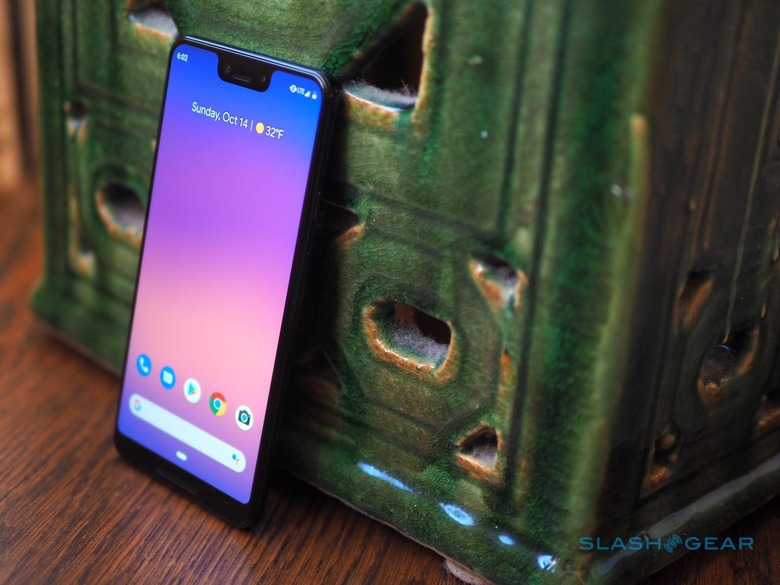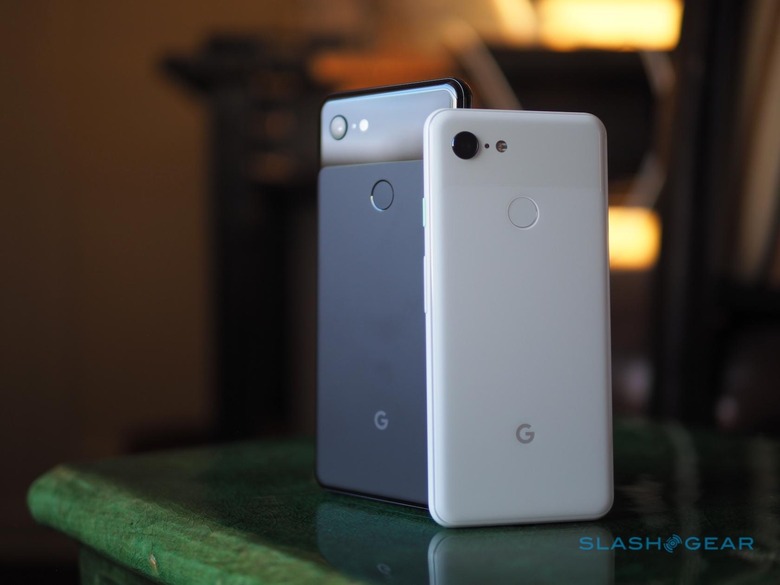For Pixel 3, Bigger Isn't Better
Bigger isn't always better, and in the case of the Google Pixel 3 and Pixel 3 XL, it's the smaller of the two smartphones that has my vote. Both smartphones share much the same feature-set, including Google's tremendous computational camera system. Indeed, it's that parity of talents which makes the Pixel 3 all the more appealing.
Google's 2018 Pixel aesthetic suits the smaller of the two handsets more. The glass front and back – complete with its partly frosted texture – and aluminum sides leave the Pixel 3 feeling more tactile than its bigger sibling. It's also a welcome smaller phone in a world dominated by phablets: considerably lighter than an iPhone XS, for instance.
Indeed, at 5.2 ounces it's a full ounce less than Apple's smartphone. It's shorter and lighter than Samsung's Galaxy S9, too, a phone which already felt pleasingly compact. That's the competition, though, but even within the new Pixel range I find myself preferring the Pixel 3 over the Pixel 3 XL.
The obvious headache involved in the Pixel 3 XL is the notch. Google's decision to squeeze not only as big a screen it can onto the handset, but add twin front-facing cameras, meant that a cut-out into the OLED was inevitable. That it looks so visually awkward, however, is just an unfortunate design decision.

I'm no notch-hater, certainly. Indeed, I'm fine with the idea that if we want maximum sensors and maximum screen size we also have to compromise somewhere. With the Pixel 3 XL, though, I keep coming back to the fact that the notch just looks wrong in comparison to how other manufacturers design their displays to accommodate a similar compromise.
The other unexpected discovery in my time with both phones, though, is how well the Pixel 3 fits your hand. There's something distinctly pleasing about a device you can use single-handed – Android 9 Pie's gestures are easier to use on the Pixel 3 versus the Pixel 3 XL, I found – but which doesn't sacrifice functionality along the way. Back in the days when phone manufacturers were making "Mini" or "Compact" versions of their flagships, the promise was always that you'd get the best of the original distilled down into something smaller. The disappointing reality, though, was always that you gave up on something.
That might be the camera, or the processor, or onboard storage, or in the worst cases some combination of all three and more. The Pixel 3, though, doesn't compromise on its processor: you get the same Snapdragon 845 as the larger Pixel 3 XL. Neither do you lose any of the camera talents. They're all just packaged up into something more compact.

I feel a little silly saying it, given it hasn't been long since I was explaining why the bigger iPhone was the iOS smartphone for me. Back in my iPhone XS and iPhone XS Max review, I found myself gravitating toward the larger of the two devices. In something with a similar footprint to the iPhone 8 Plus, I found I got a whole lot more screen to play with.
Of course, whether you go iPhone XS or iPhone XS Max, either way they're coming with a notch. Google's either/or decision dangles the more aesthetically pleasing rectangular display of the Pixel 3 in front of me, and I'm not sure I'll be alone in falling for its charms. That you save $100 in the process is just icing on the cake.
If you really want a big display, the Pixel 3 XL should be on your shortlist. Nonetheless, if Android phone-makers are watching Google for hints at where they should take their next devices, I really hope they pick up on the value of a reasonably-scaled smartphone that doesn't give up on cutting-edge specifications in the process.
